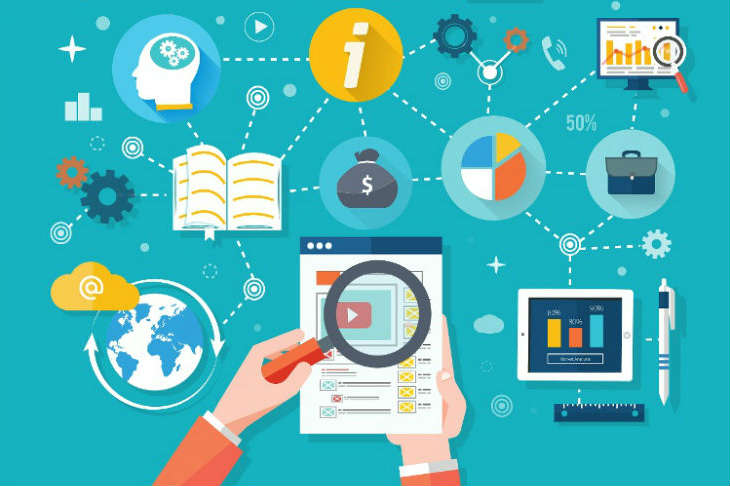
Get weekly
HubSpot updates
The buyer’s journey has changed significantly over the past few years and as such, it’s important that marketers understand the different stages of the journey and produce marketing content that aligns with where the buyer is in process.
When you examine the buyer’s journey, the different phases can be broken down to three distinct stages.
- Awareness
- Consideration
- Decision
Let’s discuss each of these in turn and let’s put some context to this by applying each of the stages to a worked example or scenario as follows.
At SpotDev, one of the services that we provide is SEO, or search engine optimisation. If we follow the inbound marketing methodology in order to attract people to our website, turn those visitors into leads, convert the leads into customers and delight the customers so they become advocates, then we know that we need to produce blog content and downloadable content offers in order to attract and convert the website visitor.
Therefore we examine the subject and think about the different offers and content that would be attractive to people at each individual stage. We would also add a further dimension to this by completing the exercise for each of our buyer personas.
Awareness
People in the awareness stage are aware that they have a problem or opportunity but at this stage they don’t know what the problem is. They are just aware of the symptoms. So we’d be asking “If the solution to their problem is SEO services, then what are the problems that we are solving” and we’d come up with a list of potential problems and questions that people would be asking and thinking about and what they would be potentially searching for:
- I’m not getting enough leads from my website
- My website is slow
- People are not staying on my site for very long
- My site does not appear in search engine rankings
For each of these, we’d then produce a high quality piece of content that the visitor would ‘opt in’ by giving us their email address, in order for them to download the content. At this stage, we’d be mindful of the fact that the buyer is looking for information to identify their problem and the content provided should be non promotional.
The content offers could be along the lines of:
- 10 reasons why your website isn’t producing leads
- Why your website is slow and what you can do about it
- How to increase your visitor engagement
- 17 reasons why your competitors are ranking higher than you in search engines
These content offers could be delivered in multiple formats, such as an eBook, white paper, infographic or webinar and they would be written in such a way that the reader identifies what the problem is - In this case, it’s a poorly optimised website.
Once the content offer has been written, we would then write a number of blog posts that are lighter in content and would naturally lead the reader to want to know more and we’d end the blog article with a call to action that offers the relevant content offer.
If we were targeting people to download the last content offer in the list above, we’d write blogs along the lines of:
- Do I need to rank high in the search engines?
- Why keyword research is important
- Traffic comparisons between the first 3 positions in Google
- 12.5 ways to generate traffic to your website
Consideration
At the consideration stage of the buyer’s journey, the buyer has now put a name to their problem and is now looking to find possible solutions. So in our worked example, they now know that they have a poorly optimised website and are searching for the best plan of action in order to solve that problem.
We’d be thinking about what questions and search terms the buyer would now be using and some examples are:
- How do I optimise my website for the search engines
- What tools are available to optimise my website
- What services are available to optimise my website
By following the same approach of providing content offers and blogs, the content offers that we’d be providing would be a bit more in-depth and start to be a bit more technical in nature and would be along the lines of:
- The definitive guide to website optimisation
- The top 13 website optimisation tools
- Website optimisation - Your options
Buyers at this stage of the journey tend to be more engaged than those at the previous stage and will spend more time researching the topic. As such, webinars, videos and more detailed guides work well for the content offers.
As well as promoting these offers to the buyer via blogs, we would also email them (remember we obtained their email address from the previous stage) and we’d display the relevant call to actions on the website when they visited. We would do this by using website personalisation technology so that the content they see when they visit the site is appropriate for the stage that they are at.
The blog articles that we would use in order to promote these content offers would be along the lines of:
- The top 10 ranking factors for your search engine optimisation
- Do automated website optimisation tools work?
- How much time is needed to optimise your website?
Our aim at this stage, as marketers of SEO services, is to get the buyer to the stage where they know they need to have SEO performed on their website and through the content that we’ve provided, we’ve suggested options such as learning how to optimise the site themselves or outsourcing to an agency - They are now at the next stage.
Decision
At this stage, they have a choice of a number of different solutions and they are evaluating which one to employ. In our example, we’ve nurtured the buyer to the stage where they have the following choices:
- Do it themselves/In-house
- Hire an SEO person
- Hire an SEO Agency
As marketers of SEO services, we obviously want them to choose the latter option. We want to be as helpful as we can to the reader, but we also want to convey that we are experts at our subject and that to do an effective job, they need an expert. As such, we’d be providing them with content like this:
- The pros and cons of doing your own SEO
- The pros and cons of using an SEO agency
- In-house vs outsourcing - A comparison guide
Blog articles that we’d write may be along the lines of:
- How much time does it take to optimise my website
- 30 must read SEO blogs to keep your SEO knowledge up to date
- Effective SEO - How much do you need to know
If we’ve done our job properly at this stage, the buyer will now realise that they need to outsource their SEO and the only choice is which agency they wish to use.
So now we’re giving them the tools to make a decision and will give content offers such as:
- The top 10 questions you need to ask an SEO agency before employing them
- 12 pitfalls to avoid when hiring an SEO agency
- 5 things you need to consider when choosing your SEO agency
We’re also at the stage where we can be more sales-focused and start providing information about the company, such as brochures and testimonials. It may be that if you’ve adopted a solid smarketing approach, that your sales team now make contact and, if relevant, make offers such as a free SEO audit or website review.
Summary
The impact of getting the buyer’s journey correct is that you get more leads into your business. If you’ve carefully thought through the problems that your buyer is facing and the questions that they are asking at each stage, then you’ll provide them with the content that they want and need. This then provides you with higher quality leads as the buyer is self-qualifying and self-educating as they consume your content. If you get this right, your sales team will spend more time working with people at the latter stage of the journey, with those that are more motivated to buy.
You’ll also find that through the provision of quality content, not only have you shown yourself to be helpful and useful to the buyer, but you’ve carved out a position of authority and expertise in your subject. As such, you’ll find that your sales conversations are more about delivery and implementation of your solution rather than price.
Now that we’ve demonstrated why the buyer’s journey is an important consideration for marketers, whilst demonstrating the process using one of the services that we offer, hopefully you’ll appreciate that the model can and should be applied to any business.

